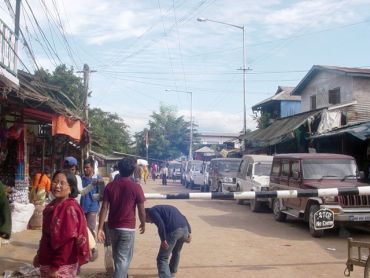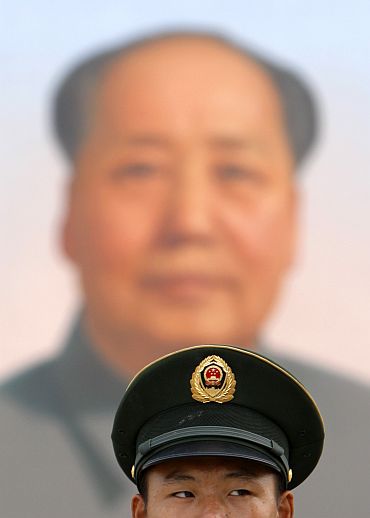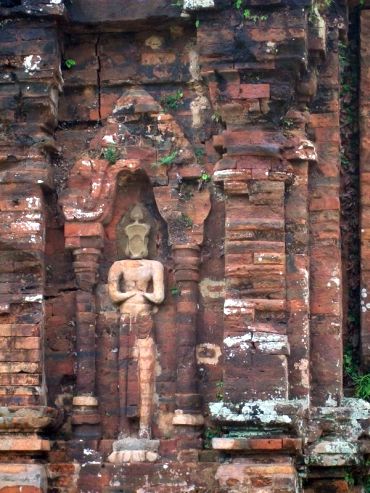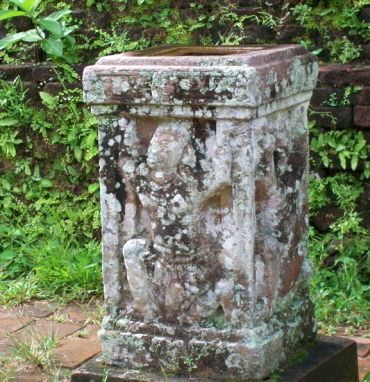
Given the importance of Vietnam and its perpetual fear of big brother China, India must improve its relations with all the ASEAN countries, says Colonel (Dr) Anil Athale.
Some months ago, India's cerebral prime minister had reportedly remarked that China wants India to be stuck in 'low-level equilibrium'. As famous one-liners go, this is almost Churchillian. The last two/three years have seen some determined efforts by India to cultivate the important countries that lie in South East Asia and on China's southern periphery. Vietnam, as the most powerful country in the region, both in military and (soon to be) economic terms was the linchpin of this 'Look East' policy.
It must be clearly understood (especially by the Indians) that the principal 'competition' in South East Asia is between the United States and China, with India acting as a quasi ally of the US. The jostling for influence in South East Asia does resemble the 'Great Game' that two imperial powers played in Central Asia in the early 19th century. Colonial India under Lord Curzon was very much part of the 'game' though Great Britain and Imperial Russia were the main actors.
Like that episode, the current and near term happenings in the South East Asia are a mixture of cloak and dagger, economic and indirect military competition. It is not an overtly military conflict. Even in the Great Game of early 19th century except for the Crimean War of 1853, the struggle seldom erupted into full-blown war.
...

The reason to recount all this history is to bring in a sense of realism in Indian 'Look East' strategy and dissipate the euphoria on Indo-Vietnam alliance being generated by the 'usual suspects' in the Delhi centric Indian media as well as editorial comments in leading newspapers.
The unstated assumption or wishful thinking is that like China uses Pakistan as a proxy to hurt India, we can retaliate by cultivating Vietnam! Nothing can be further from truth. Pakistan is a unique entity that has hatred of India hard wired into its DNA. Its strategy is 'ham to dubey hain, tumko bhi le dubenge!' (If we are drowning, we will take you along!) Vietnam's anti-Chinese slant will be well calibrated and of course in their own national interest.
Vietnam shares land and a maritime border with China while India is distant. Despite an armed conflict in Febraury/March 1979 between the two (that saw China suffer 40,000 and Vietnam suffer 20,000 casualties) relations have normalised sufficiently today. Workers from China cross over for the day to work in Vietnamese factories and vice versa. There is a direct train connection between capital Hanoi and Beijing. The annual trade between the two was close to $25 billion compared to just $2 billion between India and Vietnam.
...

In fact India does not even figure as a major trading partner with Vietnam. Just when Vietnam President Truong Tan Sang was visiting Delhi, the far more important party General Secretary Nguyen Phu Trong was holding talks with the Chinese strongman Hu Jintao. Even the agreements signed between Vietnam and India were minor ones and essentially 'photo ops' variety.
This does not mean that India must not do anything at all. On the contrary, given the importance of Vietnam and its perpetual fear of big brother China, India must improve its relations with all the ASEAN countries. All the foregoing has been written so that our expectations from this relationship should be realistic.
On a personal note, this author had suggested to the government of India way back in 1996 that we should consider supplying the short range Prithvi missile to Vietnam as a counter to China giving the M-11 missile to Pakistan. Nothing came of it then but it is worthwhile considering to offer the Brahmos cruise missile to Vietnam, especially the naval version to strengthen its defensive capability in South China Sea.
...

India has several advantages not just in Vietnam but also in Laos and Cambodia. Indian cultural influence there is ever present and owned by the people. The cultural contacts broke off in the middle ages when India itself came under Islamic rule. The Indian influence is regarded with respect and not fear since no Indian soldier ever followed the export of religion and culture.
It is a matter of regret that the ancient Indian heritage in Vietnam, Shiva temples dating back to 4th century AD are being restored and preserved with German or French help but not Indian. It is time we owned our own past in these far off lands. The Vietnamese are very gentle people and as an Indian one feels totally at home there since the culture is so similar. It is time to encourage Indian tourists to visit the ancient Indian sites of a forgotten outpost of India.
The reverse flow is equally feasible as there is a tremendous revival of and interest, in Buddhist heritage. If Bihar under Nitish Kumar 'cleans up' the sites related to Buddha in Bihar, incomes from tourism can lead to great prosperity to people of Bihar.
There is great hunger for learning English and obtaining modern education in Vietnam. During the authors visit there, young girls and boys would come up and strike conversation. The young girl whom we met on the train from Ho Chin Minh city to Danang confessed that she was making use of the opportunity to talk in English. The many young people we met there told us that they would be travelling to Singapore or far off Australia for education.
India has large number of excellent technical and medical institutes and vast reservoir of English teachers and speakers. We must export our teachers and also provide opportunities to the students from Vietnam to study in India. Compared to Singapore or Australia, we can provide this at a fraction of the cost. The HRD ministry must take this initiative rather than focusing our energies on jihad infested countries.
...

But before we can implement our look east policy, we have to shed our apathy to building infrastructure in our own north-east. The land link to Myanmar through Moreh in Manipur, is a disgrace. The links through Mizoram via Kaladan river is still on paper. The north-east is our gateway to South East Asia. Our road and rail infrastructure there must be our first priority. It is also time that we open maximum number of border crossings for trade and travel to Myanmar.
The increased travel and trade activity will automatically lead to peace in the area. It is time our PM translates his understanding of China into proactive action and break India from the low-level equilibrium. Look North East and Look East policies should be seen in that positive light. Forget the notion that Vietnam can be a mirror image proxy like Pakistan!
Colonel (Dr) Anil Athale, coordinator Inpad, a Pune-based think tank affiliated with Bharatiya Vidya Bhavan. He visited Vietnam, Laos and Cambodia in 2010.